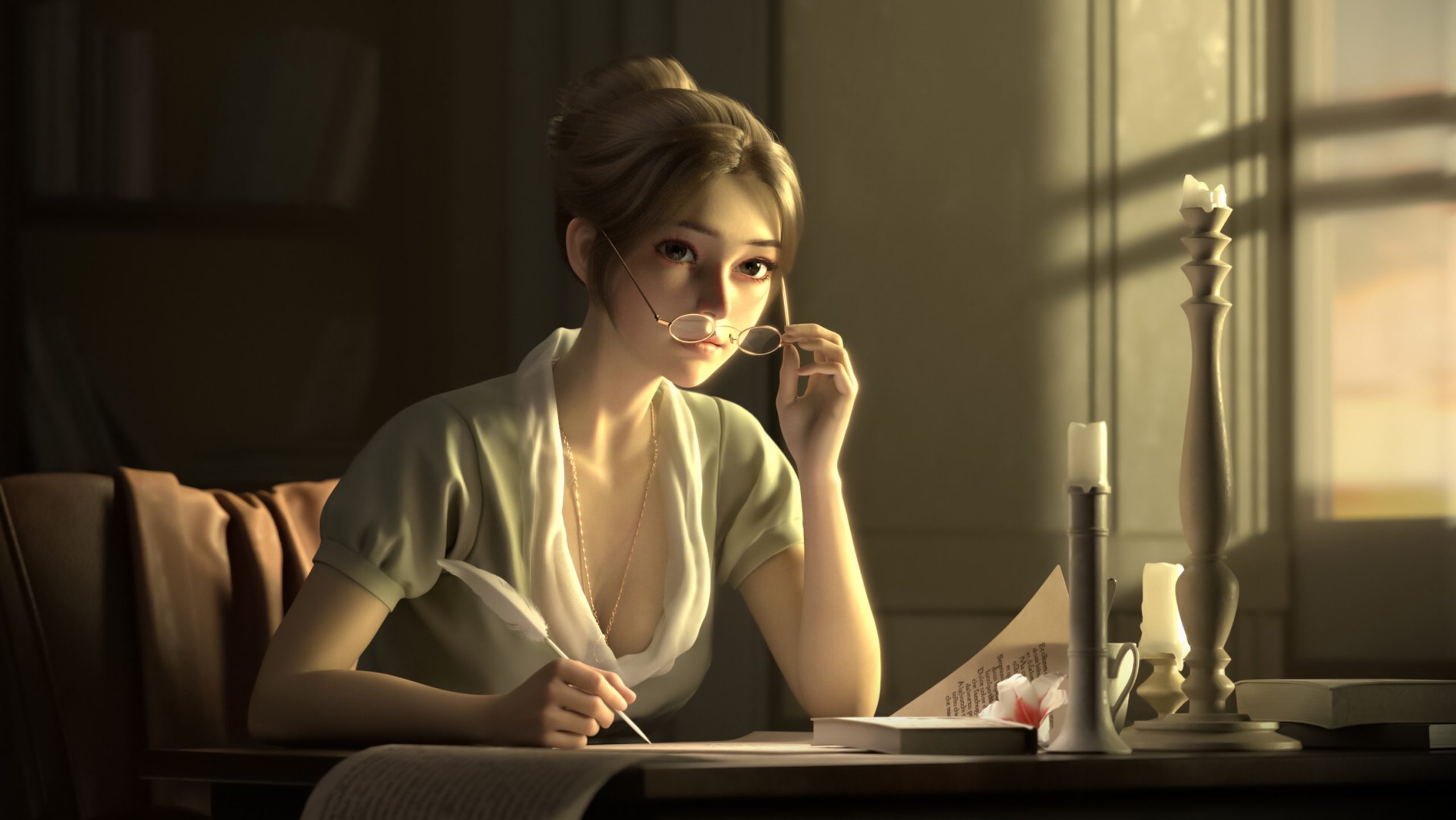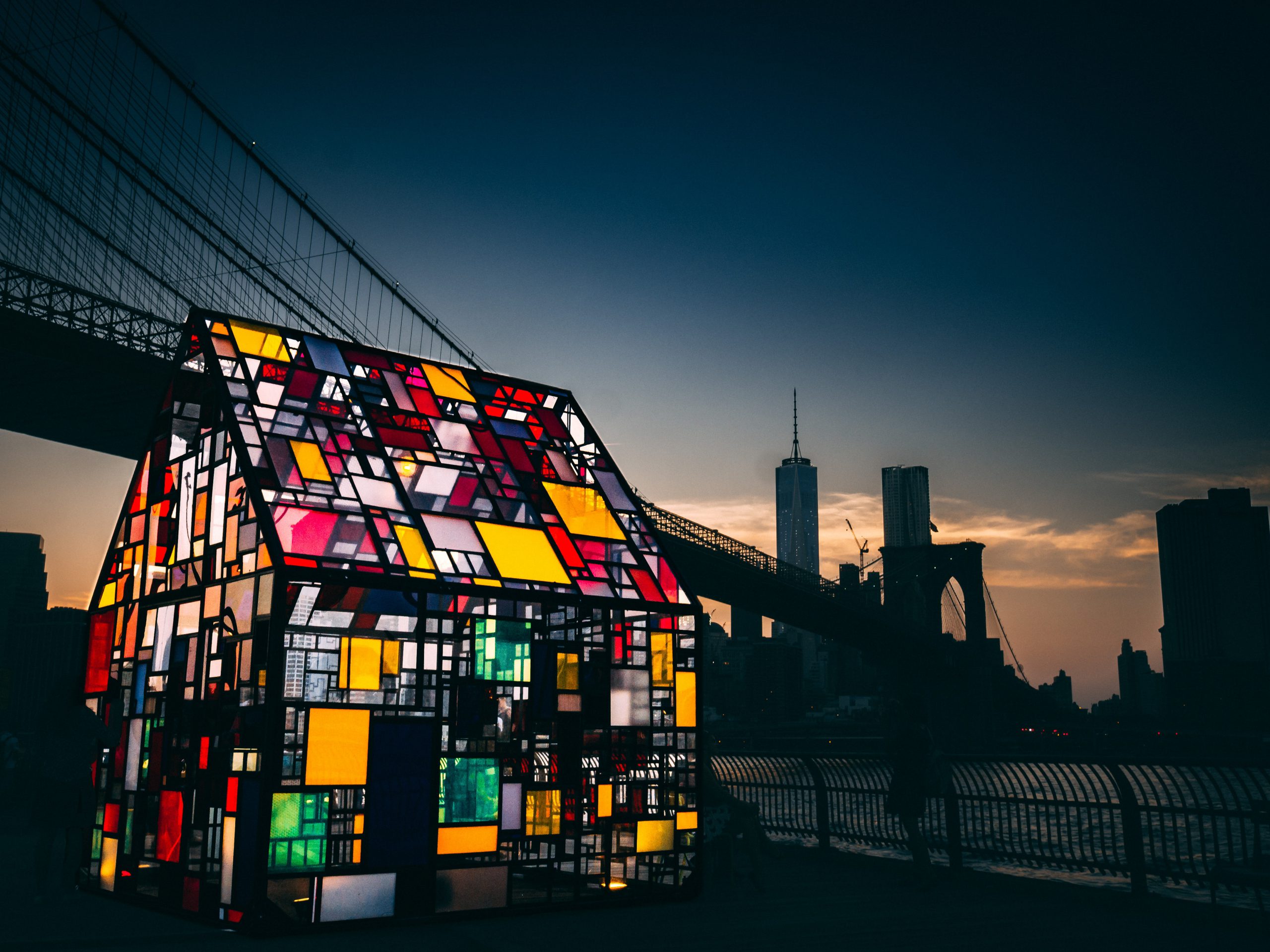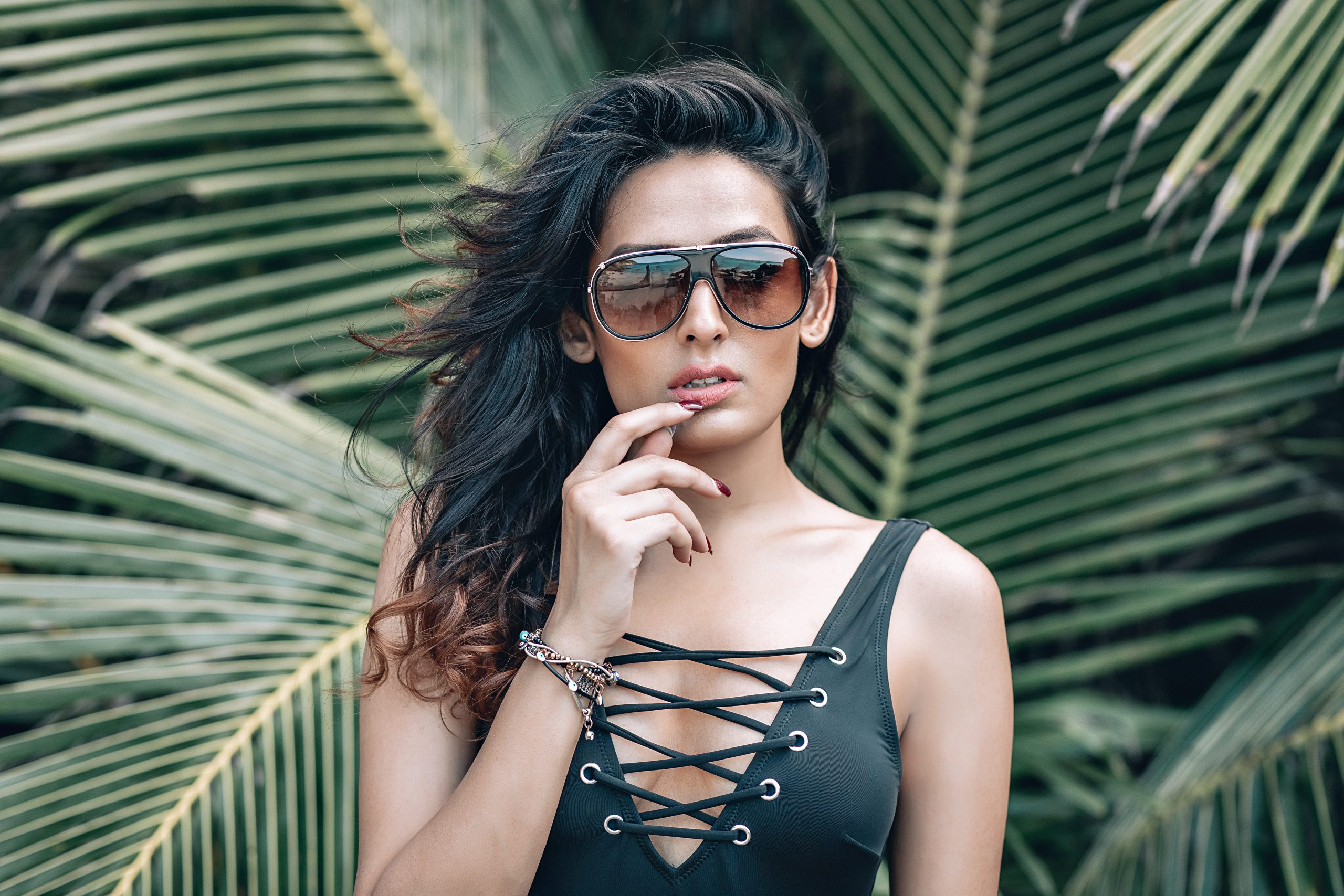
Jenn Wexler makes movies for the demonic teenage girl within. Her first feature, 2018’s “The Ranger,” combined her love of ‘80s horror movies and punk rock music for a scrappy, dynamic contemporary slasher movie. Her second, “The Sacrifice Game,” is more polished but no less provocative: Set at a snowbound girls’ boarding school on Christmas Eve, 1971, the film combines the home invasion, occult, and teen horror subgenres for an unpredictable and exhilarating ride.
The film opens with a brutal attack on a suburban couple celebrating Christmas who are targeted by a Mansonesque gang of malevolent hippies: Jude (Mena Massoud), the ostensible ringleader; Maisie (Olivia Scott Welch), the actual mastermind; and their hapless flunkies Doug (Laurent Petris) and Grant (Derek Johns). Eventually, their murder spree leads the foursome to the Blackvale School for Girls, where students Samantha (Madison Baines) and Clara (Georgia Acken) are spending a lonely holiday in the echoing stone hallways of the school with their teacher Rose (Chloë Levine).
Wexler and her cast and crew debuted “The Sacrifice Game” at this year’s Fantasia Film Festival in Montreal, Quebec—the same province where much of the film was shot. We spoke with Wexler the following morning for a conversation that started with Christmas envy and ended with a deep dive into Wexler’s process.
Why did you want to make a Christmas horror movie specifically?
Having the story take place on Christmas story-wise made sense in terms of [themes of] chosen family, and finding home where you are. I also love “Black Christmas,” and that was certainly an influence [on the film].
I’ll also say that I’m Jewish, so I didn’t get to experience Christmas when I was a kid. But I believed in Santa Claus, and I was sad that all my friends were celebrating Christmas and I wasn’t. I used to try to stay up all night watching the house across the street from me to see if Santa would land on their roof.
Aw. Did your parents know that you secretly believed in Santa Claus?
Yeah. In fact, there was a moment where my mom had to break it to me that Santa wasn’t real. She said, “Don’t tell your friends who celebrate Christmas.” So I had this lifelong dream that [one day] I could celebrate Christmas, and that was part of why I wanted to make this movie.
And because you’re a horror director, you did it in the most f**ked up way possible.
[laughs] Exactly. And that may be why there’s a little bit of sadness to these girls. They’re alone on Christmas.

The film is set in 1971. Am I correct that there’s a bit of Manson-sploitation in the mix here?
I read Helter Skelter as a teenager, and that’s just always been on my mind. Media has definitely fictionalized [the story], but I’ve always been sickly fascinated with the case—it’s real life, you know? It really happened. It captured the public’s fascination back then, and it continues to do so generations later. There’s even a line about that in the movie: “You’ll be remembered for generations.”
At last night’s Q&A, you said that the anxieties of that era were similar to our own. What did you mean by that?
I meant that there were a few people making decisions that are affecting everybody, which is similar to today. There are a lot of examples of that; one example is climate change. The individual doesn’t have a say about policies around climate change, but our world is being destroyed, too. There was a lot of the same hypocrisy in that time period, [in terms of] the mass murder happening in Vietnam.
Georgia Ackin, who plays Clara—gets an “introducing” credit in this film. Where did you find her?
Honestly, just through casting and auditions! I watched many teen girl auditions for this film, and when I watched hers—there was this gut feeling of, “This is Clara right here.” This is her first feature.
She’s so good. She reminded me of Linda Blair in “The Exorcist” at times.
She’s so good. And on set, she only needed two takes for everything. She’s so fast. She picks it up so quickly.
Does she do theater or something?
Yeah, she’s done a lot of musical theater. She was Matilda in the Vancouver production of “Matilda.” Her and her mom took a trip to New York City [during production], and they found a piano bar, and she sang in front of a room full of people in the piano bar. So she does have an instinctive knack for performing.
It was such a pleasure to work with her and to work with Madison Barnes, who plays Samantha. They had an immediate chemistry, and they became best friends quickly.
What qualities are you looking for when you cast a teenage girl?
It’s always character-based, and it’s different for each character. For Samantha, I was looking for vulnerability, and I found that in Madison. If you see the audition and you’re feeling it already, you know it’s only going to grow when you’re on set, and everyone’s working together. And then with Georgia, she literally read [her lines] as I imagined Clara would say them. There was no question with that.

When you say that casting is based on the character—I want to dig into that a little bit. Are you looking for someone who matches what you had in your head when you’re writing? Let’s say with Laurent Pitre and Derek Johns, who plays Doug and Grant.
You develop a vibe when you’re writing. You’re merging all of your influences together. I love watching horror movies—I’ve been doing it since I was ten years old. So I have a library in my brain of references. For me, the joy of writing is taking all your influences and jumbling them up and mixing them with your emotional trauma from adolescence, and seeing what comes out. [laughs]
Filmically, I had Steve Buscemi in “Reservoir Dogs” on my mind for Doug. And then for Grant, I had “Full Metal Jacket” and Vincent D’Onofrio. But then you meet the actor, and the actor has to make it their own. That’s one of the things that I like to say when I’m working with an actor: “I’ve built the world to here, and I built this character to here. And now I hand the character to you.” I see the overall structure of the thing and how the characters interweave. But they’re taking the character and they’re discovering the inner lives of the character. It’s a handoff.
How about Mena Massoud as Jude? He’s really bringing it, too.
He was incredible. It was just a dream for me. He’s so charming as Aladdin and so beloved. How do we take that charm and twist it into something evil?
That Charles Manson narcissist energy.
Exactly. In our first conversation, we were talking about this, and he was into it. He was so willing to go there, so willing to give himself to that performance. And I’m so grateful for him.
You have two really sick Christmas dinner scenes in this movie. What were you thinking when you were staging each of them?
In one of them, the gang has all the power. For that, I wanted it to feel like a movie from the ‘70s. I wanted to have that little bit of grit and discomfort to it. And for the camera, I wanted the camera to feel like a shark circling the table.
It was really cool, because when I saw [the room where the scene takes place] on our location scout, I thought, “This room feels like it came from my mind. It’s real, and it’s here.” It was cool just in terms of the production design and the lighting, thinking about these two scenes and how we were going to take this space and flip it and make it feel different or evolved.
Overall, I wanted it to feel like we’re starting in this pristine dollhouse place, and then over the course of the movie, we’re slowly descending into hell. And the second scene was part of that. I wanted the characters to feel like they’re facing their fate, and there’s no escape. You’re locked. You’re stuck here.
Tonally, you have a little bit of gothic horror and a little bit of that gritty ’70s horror. But there’s a sharp sense of humor to the film, too. Was that in the original script, or did it evolve as you were working?
It’s always a process because you’re trying to achieve something at every stage. You write the thing, and then you’re directing the thing, you’re trying to make sure that you did it right, and you’re discovering new things along the way—different things that you didn’t even catch [on set]. There’s so much going on on set that you discover in post, like, “Oh, wow, Doug gave a really cool look here.”
While editing, you’re trying to capture the tone. You’re always playing with it and discovering new ways to achieve it. Like, “Okay, this scene, as we cut it, is not quite hitting the tone. What can we do with sound design and music to cinch that in?”
You were talking about that at the Q&A—dropping in songs and seeing which one made the tone click.
Yeah, exactly. You have a destination in mind and the tools you’re going to use. Then you see what exciting things you can find along the way.

When you’re shooting a movie, how married are you to your script and what you were envisioning when you were writing?
I think that the script is what you’re shooting. You have to have your script because everyone has to know what you’re doing that day. The script is what, and the directing is how. That’s how I like to think about it.
How do you mean?
The directing is how you approach it because you could have the same scene made by three different directors, and it could have a totally different feel [with each of them]. What are the emotional nuances of the scene? That’s everything from your shot list and composition to the camera and the lighting. Atmosphere, production design, all of it. But like I said, everyone has to know what’s going on.
People talk about a script as a blueprint, and I agree with that in terms of production. I also think that the script is an art form in itself, especially in the stage when you’re trying to get financing. That script has to work on its own.
You said earlier that you let your actors come up with the inner world of their characters. How does that work on set?
I think what’s really important—and this is for all departments—is getting on the same page early and making sure everybody’s making the same movie. For actors, yes, they’re discovering their own inner worlds. You know, I might have ideas about their backstories, and we have those conversations. But I’m also super open because different actors have different approaches.
I tell them, “I’m here as much as you wanna talk. We can get deep into it, or we can talk on a more surface level, and you go on your journey.” But I like to give them a spine for their character: What does your character want? I really try to boil that down to the shortest, quickest thing possible. And that’s part of developing our language.
Something that’s really important to me as well is everyone getting comfortable with each other’s energy. That’s really more, for me, what rehearsals are about. And then, when we’re blocking and rehearsing on set, that’s finding the nuances of the scene. But the language is already there because we’ve talked about it a lot.
It sounds like there’s a process of discovery as you’re shooting.
Yeah. I think you have your North Star, and then it’s about connection and everyone feeling safe. That’s important, too. A set is a crazy place. There’s so much going on, and it’s so hard for actors.
Especially with someone like Georgia, who’s shooting their first movie.
I have such respect for actors. You have to go in front of all these people doing all their things, with all the hecticness of production. Then you have to pour your soul out in front of everybody. That’s why I want everyone to feel really safe.
Some actors are 100% in right away. Others need more warm-up, so you do a couple more takes so they can sink into it. That’s part of the process, too, discovering how everybody works.
Speaking of everybody getting on the same page—how does that work with the behind-the-scenes departments, like cinematography or production design?
I’m obsessed with lookbooks. I make my overall lookbook for the film, and then I make lookbooks for each department. And it’s specific to the department—I want to evoke these movies with the camera. I want to evoke this kind of look with the production design. That’s how I start the conversation, so again, everybody knows the world that they’re playing in. Then once everybody knows the world they’re playing in, I’m so open to ideas. At that point, I’m like, “Please, you’re the expert in your department. I’m thrilled to have amazing ideas and for you to bring it.”
But communication is super important. Obviously, you have to have all your prep meetings so everyone knows logistically what’s going on with each other and who’s doing what. Sometimes it’s confusing: For example, is a watch a prop or costume? You’re figuring out things like that. But I want everybody to be on the same page right from the outset so that the ideas are all in the same sandbox.
“The Sacrifice Game” will launch on Shudder later this year.




